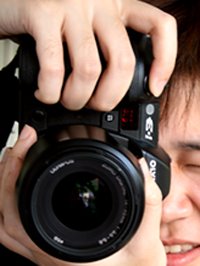 Some people ask me the meaning of my slogan site....so here is the answer! :)
Some people ask me the meaning of my slogan site....so here is the answer! :)http://en.wikipedia.org/wiki/A_picture_is_worth_a_thousand_words
 Some people ask me the meaning of my slogan site....so here is the answer! :)
Some people ask me the meaning of my slogan site....so here is the answer! :) Red eye Red eye reduction mode has become extremely popular in all sorts of cameras, both digital and analog. By pre-flashing the camera flash several times quickly right before the picture is taken, the red eye reduction mode forces your subject’s pupils to close down to a smaller size, thus decreasing the chances that they will reflect the light of the flash. When you use this mode, remember that it will take a fraction of a second longer for the picture to be taken; don’t pull the camera away as soon as you press the shutter release, or you’ll blur the picture. If you’re photographing people in a dark room, however, this mode is probably worth the extra time. You do not need to use red eye reduction outdoors or in bright light.
Red eye Red eye reduction mode has become extremely popular in all sorts of cameras, both digital and analog. By pre-flashing the camera flash several times quickly right before the picture is taken, the red eye reduction mode forces your subject’s pupils to close down to a smaller size, thus decreasing the chances that they will reflect the light of the flash. When you use this mode, remember that it will take a fraction of a second longer for the picture to be taken; don’t pull the camera away as soon as you press the shutter release, or you’ll blur the picture. If you’re photographing people in a dark room, however, this mode is probably worth the extra time. You do not need to use red eye reduction outdoors or in bright light.  Low power Some digital cameras let you control the power output of the flash. You might be able to reduce its intensity by 50 percent or more. You can use this mode when you are using the flash to fill in shadows, or when you are taking a close-up and a full flash burst would overexpose your subject.
Low power Some digital cameras let you control the power output of the flash. You might be able to reduce its intensity by 50 percent or more. You can use this mode when you are using the flash to fill in shadows, or when you are taking a close-up and a full flash burst would overexpose your subject.  Slow In the world of 35mm photography, this slow setting is sometimes referred to as a rear curtain flash. Other cameras, such as Nikon digitals, call it Slow Sync. Of course, that name may not help you understand what the slow setting does. When you set the camera to slow flash, it fires the flash at the tail end of the exposure. It’s used most often at night, when the exposure is long (such as a second or more). What does it do? Suppose you were trying to take a picture of a car driving down the street. With an ordinary flash exposure, the flash fires right away, thus freezing the car at the start of the frame. In a long exposure, you will then see headlights cut through the car and out of the frame. The slow mode, however, saves the flash for the end. In a picture taken with this mode, you will see headlights that travel through the frame and then meet up with the rear of a flash-frozen car. The car is leaving the picture at the end of the exposure, just like it should. As you can imagine, you won’t use this mode all the time, but it is indispensable when you need to get a certain kind of long-exposure photograph.
Slow In the world of 35mm photography, this slow setting is sometimes referred to as a rear curtain flash. Other cameras, such as Nikon digitals, call it Slow Sync. Of course, that name may not help you understand what the slow setting does. When you set the camera to slow flash, it fires the flash at the tail end of the exposure. It’s used most often at night, when the exposure is long (such as a second or more). What does it do? Suppose you were trying to take a picture of a car driving down the street. With an ordinary flash exposure, the flash fires right away, thus freezing the car at the start of the frame. In a long exposure, you will then see headlights cut through the car and out of the frame. The slow mode, however, saves the flash for the end. In a picture taken with this mode, you will see headlights that travel through the frame and then meet up with the rear of a flash-frozen car. The car is leaving the picture at the end of the exposure, just like it should. As you can imagine, you won’t use this mode all the time, but it is indispensable when you need to get a certain kind of long-exposure photograph.How far will the light from your flash travel? That’s something you need to know if you expect to get the most out of your flash. The flash built into most digital cameras is not extremely powerful; at best, you can expect to get a range of about 20 feet. To find the range of your camera’s flash, refer to the owner’s manual that came with your camera. You can almost always find the flash range listed in the specifications section of the manual. If you cannot find the range of your flash listed there, assume it is no more than about 15 feet.


 Some information of storage drive for camera are shown here:
Some information of storage drive for camera are shown here:
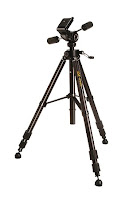
 Here is the short information for bateries:
Here is the short information for bateries:

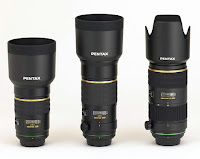
Zoom lens brand: Pentax
This type of lens is very popular because it can change the focal length so it is very comfortible for users. This lens need a very complex designed for focusing point in every focal length. Generally this lens will have the 2 values of widest aperture between lowest focal length and highest length due to the light is decrease when we zoom from low length to high length. However, It can produce the zoom lens that can give the constantly aperture in each focal length but it will be very expensive because of it need the special equipment and special technique for contrast and color editing. Besides, the way to change the focal length of lens can be done by twist the ring of lens or by pull out/in.
The problem of zoom lens is can not have very wide aperture so it needs to use the low speed of shutter also this hard for hold the camera by ourselves. In the zoom lens which is can give a wide aperture as single lens will have a very high cost.
The zoom lens can give the magic of picture , let’s try to change the focal length while press the
shutter, do not forget to set the low speed shutter at 1 ,2, etc.
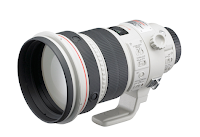 This type of lens will have the angle view only 2-28 degree and very low depth of field but can show picture of object as closer even it is placed in long distance.
This type of lens will have the angle view only 2-28 degree and very low depth of field but can show picture of object as closer even it is placed in long distance.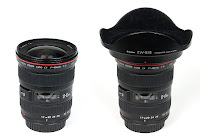 The wide lens or the short focal length lens will increase the perspective of the image and give the wider angle view such as lens 18 mm. can have 94 degree of angle. The wider angle lens can make the more distortion by the vertical line (90 degree) will slightly bend into the centre of the picture. However the high quality of wide lens can reduce the problem of distortion and also the more quality the more price. We should use the wide lens with the view picture because it give the more depth of field. Also we can take the macro by the wide lens but it will give the wider background.
The wide lens or the short focal length lens will increase the perspective of the image and give the wider angle view such as lens 18 mm. can have 94 degree of angle. The wider angle lens can make the more distortion by the vertical line (90 degree) will slightly bend into the centre of the picture. However the high quality of wide lens can reduce the problem of distortion and also the more quality the more price. We should use the wide lens with the view picture because it give the more depth of field. Also we can take the macro by the wide lens but it will give the wider background.Standard lens can be called Normal lens. It can give the image closest with the image which human’s eyes given so its name is Normal lens. The focal length of this lens are 50-55 mm. can be used for general photography and give the average depth of field. Normally, this type of lens will be the kit lens (sold with the camera).
1. components of lens
The photography lens tube has the cylinder form and inside it includes many pieces of lens and a aperture. Besides, the outside of its tube will have the ring for control the aperture and focal length (meters, feet). The more piece of lens the more expensive.
2. Lens and angle receivable
The SLR digital camera can switch its lens. The difference brand of camera may have the difference type of mount of lens however many difference brands of camera can use the same lens. So should be carefully when buying new lens. Besides, nowadays there are many independent brands which can produce the many type of lens in the lower price which can support many brand cameras.
Below is the focal length compare with the degree of the view receivable:
3. The focal length of lens
For the aperture in each lens are difference depending on the type of lens specially if you want to take the portrait picture of human , you may need the very high aperture to blur the background of your object.


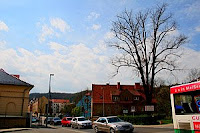 Second: use narrower focal lenght -> Low depth of field
Second: use narrower focal lenght -> Low depth of field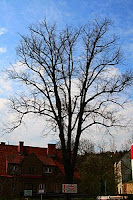 3. Subject distance
3. Subject distanceSame…what I like to do before writing the article or message in this blog, I had search in google.com for the definition of exposure and what I got are:
After I got the results, I think for me the exposure in photography are How much light you want in your shot and we can set that where in our picture should be bright or dark however, to understand the ways to control your light is need time and also need more practice. Besides, to know about exposure should really know about ISO, Aperture (F/stop) and also speed shutter.
 The camera is designed for this scene you want to take or not? You can apply exposure to be under or over the scene.
The camera is designed for this scene you want to take or not? You can apply exposure to be under or over the scene.

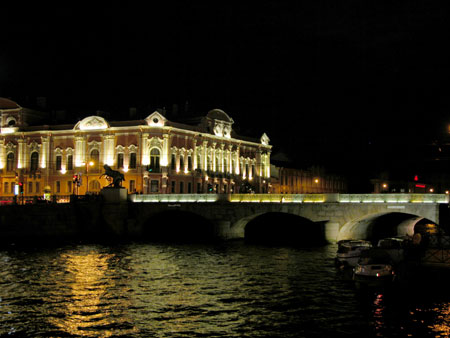
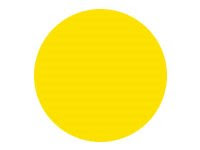 In the old days, most cameras came with a simple center-weighted light meter. This meter measures the light overall the image but take the more intense on the center of the frame you see in the view-finder.
In the old days, most cameras came with a simple center-weighted light meter. This meter measures the light overall the image but take the more intense on the center of the frame you see in the view-finder.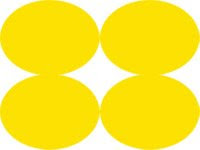 This system is most prevalent in Nikon models, all the way from the CoolPix 950 and CoolPix 995 to the high-end D1x. The matrix meter by add more intense of light not only at the center but also intense on all of the 4 corners within a picture. Matrix meters gauge the light in many parts of the scene at once. Many people say that this type of measuring is the best for you to setting this mode all the time.
This system is most prevalent in Nikon models, all the way from the CoolPix 950 and CoolPix 995 to the high-end D1x. The matrix meter by add more intense of light not only at the center but also intense on all of the 4 corners within a picture. Matrix meters gauge the light in many parts of the scene at once. Many people say that this type of measuring is the best for you to setting this mode all the time. As you know the meaning of spot; Spot is the specific point or may be part from whole picture. The spot meter is the optional for you if you do not want to use the centre weight or matrix meter As you can see below picture:
As you know the meaning of spot; Spot is the specific point or may be part from whole picture. The spot meter is the optional for you if you do not want to use the centre weight or matrix meter As you can see below picture: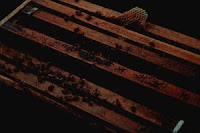
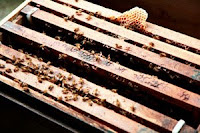

 letting in more or less light as needed. Every camera—no matter what it uses for film—controls the exposure with some sort of aperture.
letting in more or less light as needed. Every camera—no matter what it uses for film—controls the exposure with some sort of aperture.At a given ISO, you can take a picture with a specific aperture/shutter combination. If you double the film speed (ISO) without changing the lighting conditions, though, you have to adjust the aperture and shutter speed so that you still get a properly exposed picture.
I find out the meaning of a composition by seraching from google.com by use the word "composition definition" and then the result as follow:
The above one is the one that I think it is a composition in photography :) In my opinion I think that the composition is the way to create your picture to be not so boring like to find some important point of your picture and show it to the viewer by using your composition idea.

